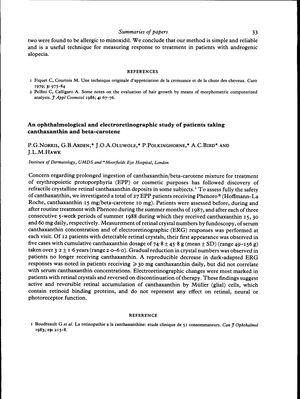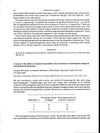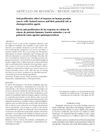An Ophthalmological and Electroretinographic Study of Patients Taking Canthaxanthin and Beta-Carotene
July 1989
in “
British Journal of Dermatology
”

TLDR Long-term use of canthaxanthin may cause reversible changes in the eye, including crystal deposits and altered vision responses.
In a study conducted in 1987 and 1988, 27 patients with erythropoietic protoporphyria (EPP) were assessed for the safety of prolonged ingestion of a canthaxanthin/beta-carotene mixture (Phenoro®) used for treatment of EPP or cosmetic purposes. The study involved monitoring the patients before, during, and after treatment with Phenoro® over the summer months, with canthaxanthin dosages of 15, 30, and 60 mg daily during three consecutive 5-week periods. The researchers measured the number of retinal crystals, serum canthaxanthin concentration, and electroretinographic (ERG) responses. They found that retinal crystals first appeared after a cumulative canthaxanthin dosage of 74.8 ± 45.8 g over 3.2 ± 1.6 years. A decrease in dark-adapted ERG responses was observed in patients receiving more than 30 mg of canthaxanthin daily, but this did not correlate with serum canthaxanthin levels. The ERG changes, most pronounced in patients with retinal crystals, were reversible upon discontinuation of therapy, suggesting that the retinal accumulation of canthaxanthin was active and reversible, affecting Müller (glial) cells but not retinal, neural, or photoreceptor function.


